Abstract
As stratified patient care evolves, and with an increasing population of elderly patients undergoing major surgery there is a growing demand for critical and high-dependency care beds. Results of an audit comparing the activity of a combined Intensive Care and High-Dependency Unit (ITU/HDU) in 1981 with 1991 has shown an increase in the number of patients admitted, particularly for high-dependency care. The overall mortality in 1981 was 12% compared with 9.5% in 1991. The greatest improvement was seen in ventilated patients, where the mortality was reduced from 54% in 1981 to 30% in 1991. An attempt is made to predict the demand for critical care and high-dependency beds for the future in a population of approximately 250,000 based on current trends. It is perceived that it will be necessary to establish a six-bed ITU and eight high-dependency surgical beds in two separate but adjacent units, where there will be a free interchange of skills at the different levels of care.
Full text
PDF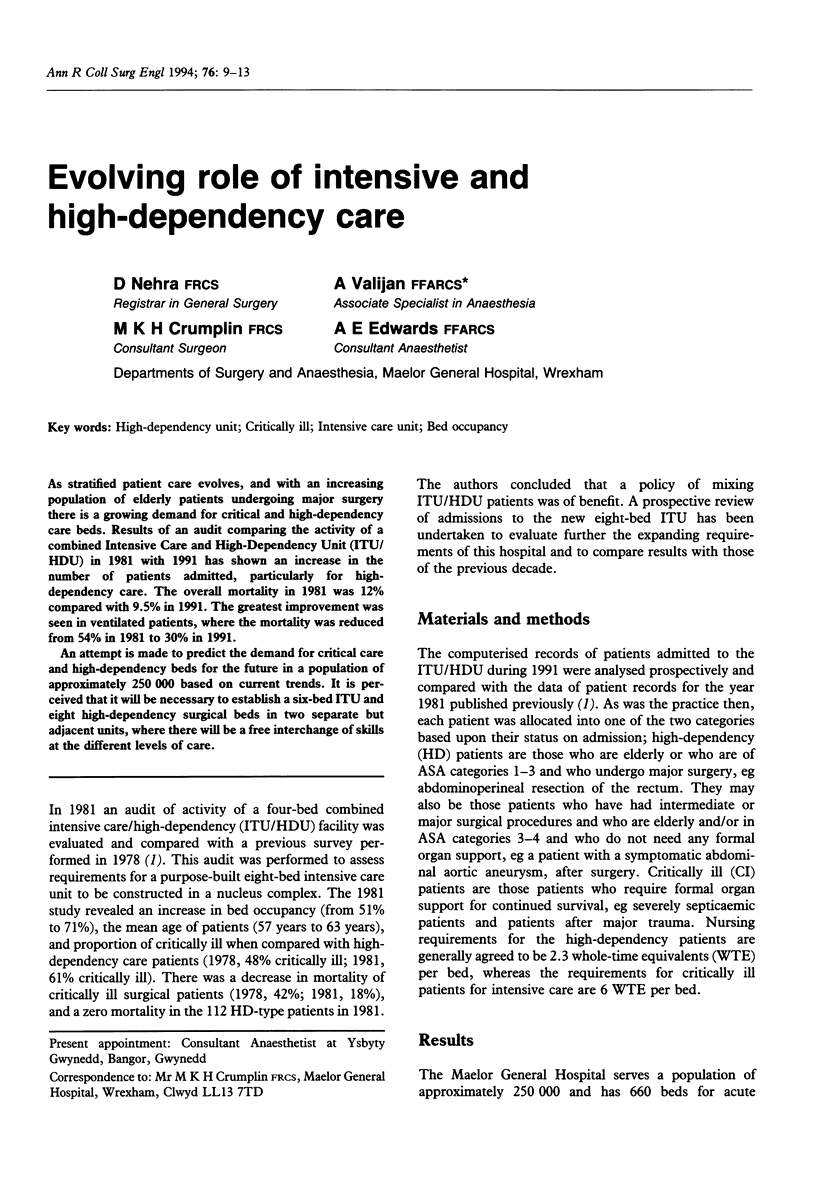
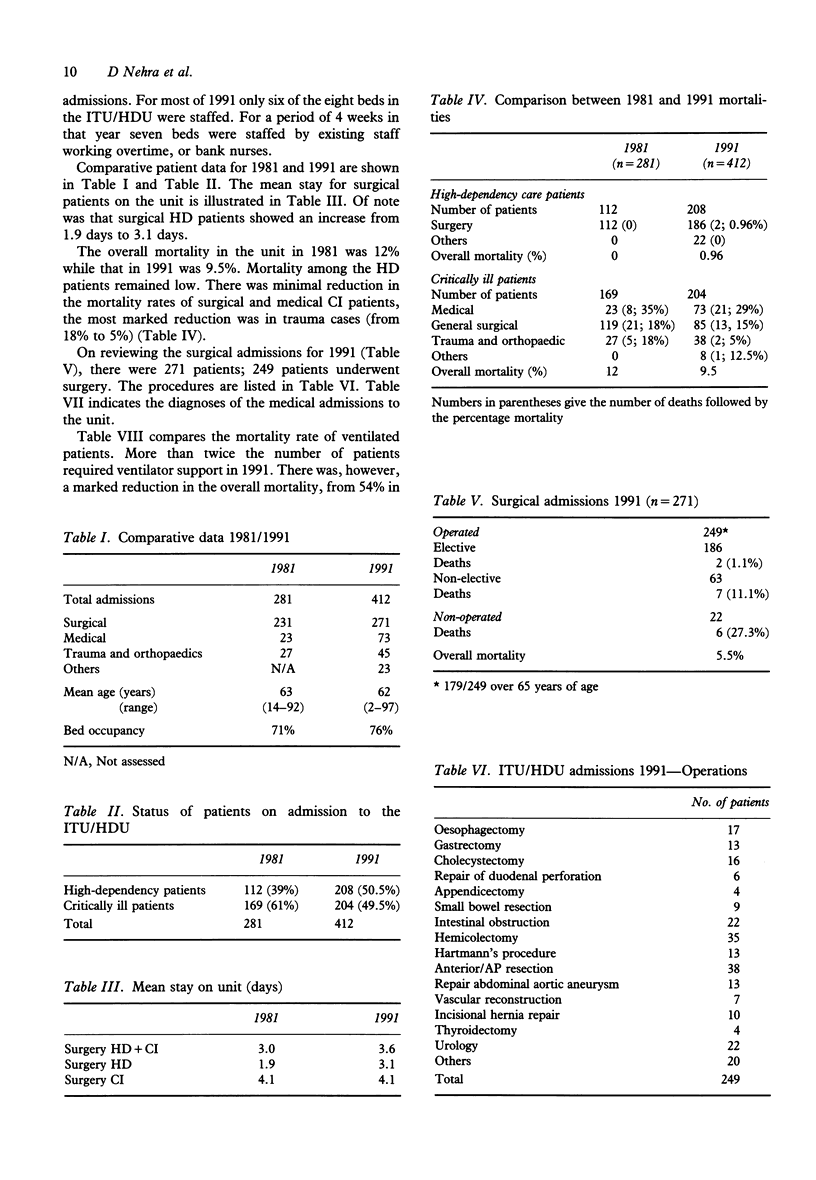
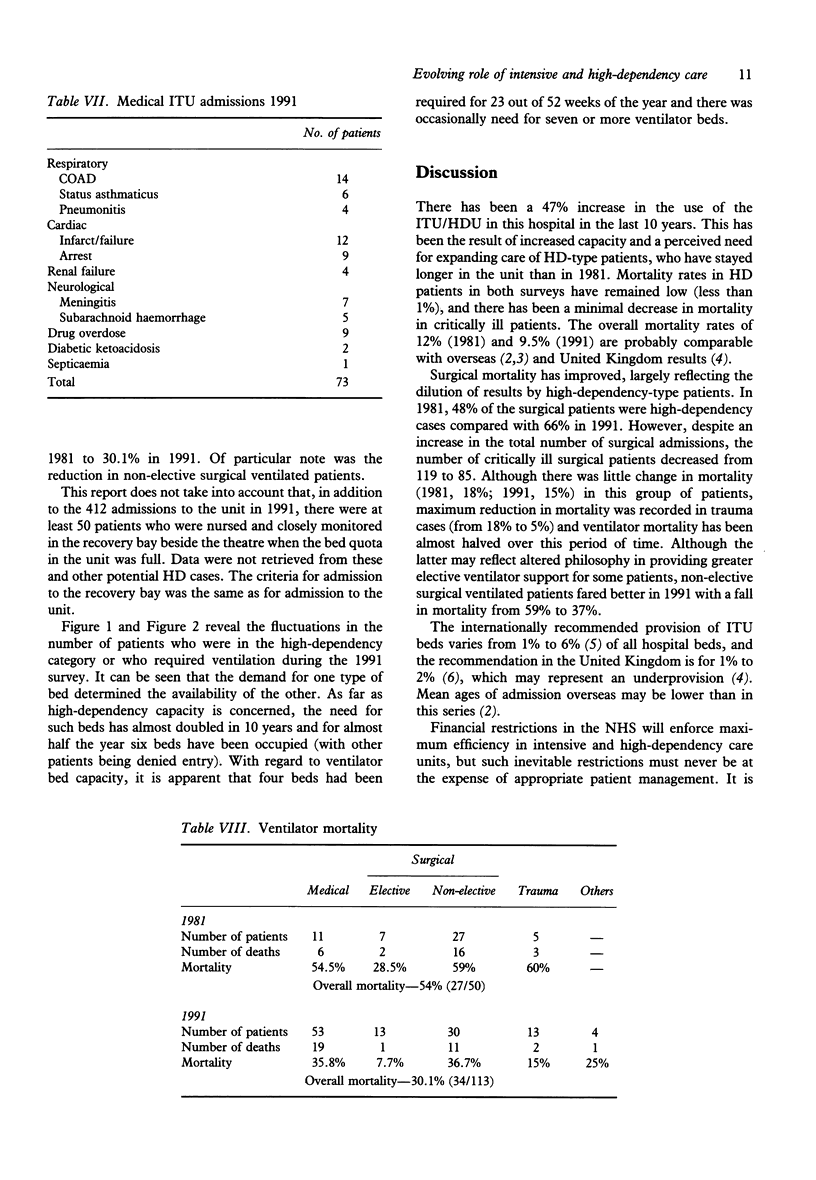
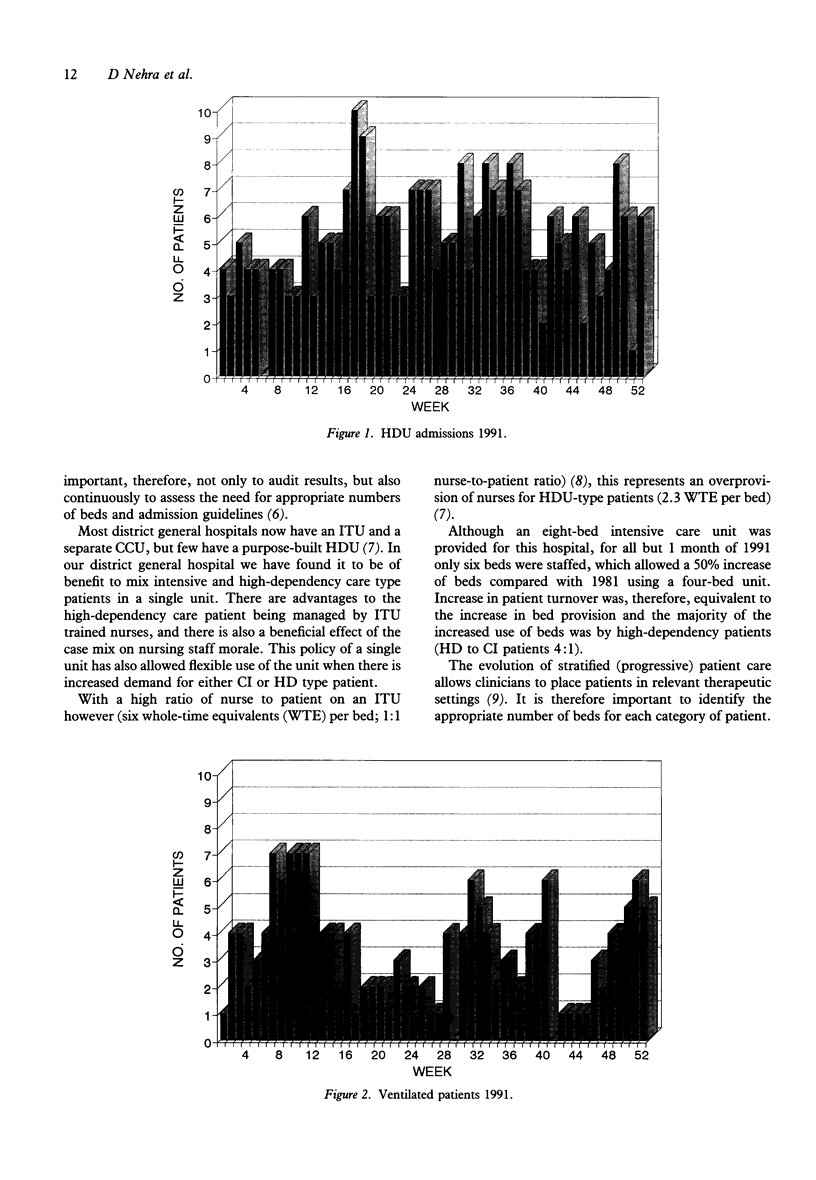
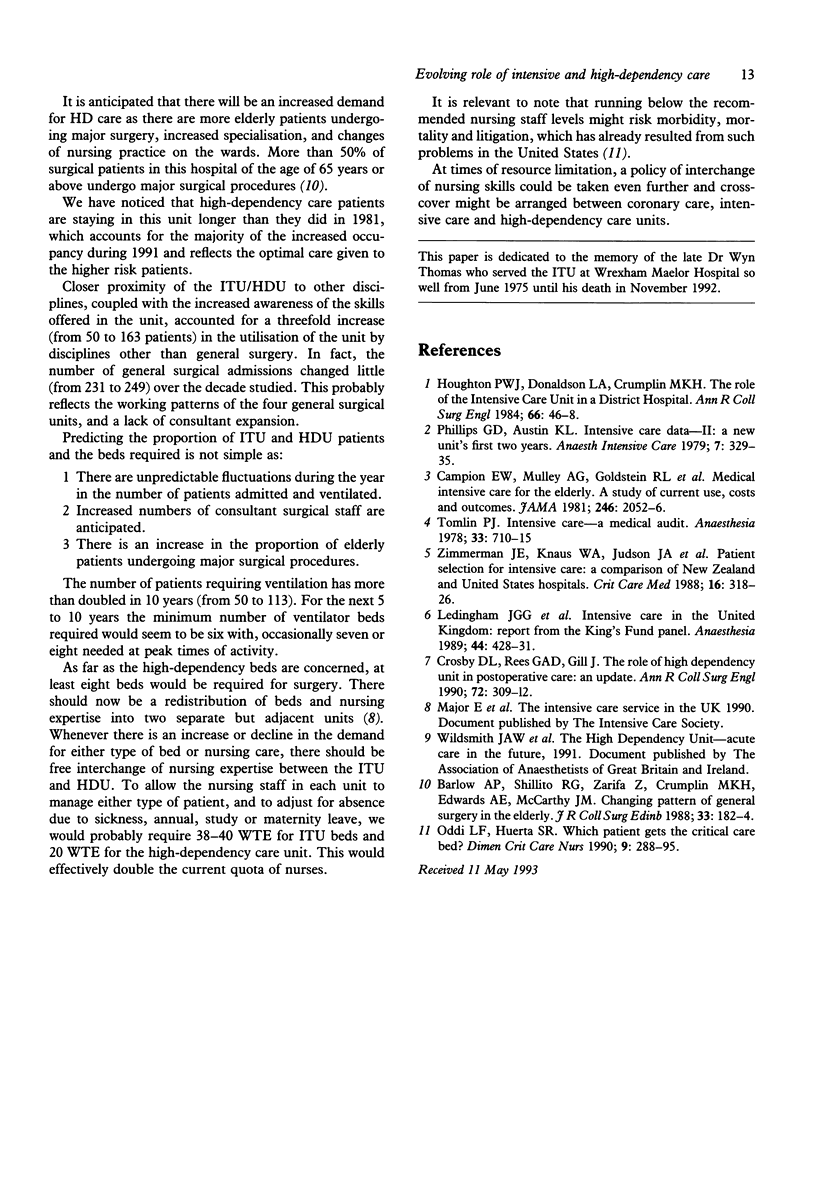
Selected References
These references are in PubMed. This may not be the complete list of references from this article.
- Barlow A. P., Shillito R. G., Zarifa Z., Crumplin M. K., Edwards A. E., McCarthy J. M. Changing pattern of general surgery in the elderly. J R Coll Surg Edinb. 1988 Aug;33(4):182–184. [PubMed] [Google Scholar]
- Campion E. W., Mulley A. G., Goldstein R. L., Barnett G. O., Thibault G. E. Medical intensive care for the elderly. A study of current use, costs, and outcomes. JAMA. 1981 Nov 6;246(18):2052–2056. [PubMed] [Google Scholar]
- Crosby D. L., Rees G. A., Gill J. The role of the high dependency unit in postoperative care: an update. Ann R Coll Surg Engl. 1990 Sep;72(5):309–312. [PMC free article] [PubMed] [Google Scholar]
- Houghton P. W., Donaldson L. A., Crumplin M. K. The role of the intensive care unit in a district hospital. Ann R Coll Surg Engl. 1984 Jan;66(1):46–48. [PMC free article] [PubMed] [Google Scholar]
- Intensive care in the United Kingdom: report from the King's Fund panel. Anaesthesia. 1989 May;44(5):428–431. doi: 10.1111/j.1365-2044.1989.tb11346.x. [DOI] [PubMed] [Google Scholar]
- Oddi L. F., Huerta S. R. Which patient gets the critical care bed? Dimens Crit Care Nurs. 1990 Sep-Oct;9(5):288–295. doi: 10.1097/00003465-199009000-00012. [DOI] [PubMed] [Google Scholar]
- Phillips G. D., Austin K. L. Intensive care data--II: A new unit's first two years. Anaesth Intensive Care. 1979 Nov;7(4):329–335. doi: 10.1177/0310057X7900700403. [DOI] [PubMed] [Google Scholar]
- Tomlin P. J. Intensive care--a medical audit. Anaesthesia. 1978 Sep;33(8):710–715. doi: 10.1111/j.1365-2044.1978.tb08466.x. [DOI] [PubMed] [Google Scholar]
- Zimmerman J. E., Knaus W. A., Judson J. A., Havill J. H., Trubuhovich R. V., Draper E. A., Wagner D. P. Patient selection for intensive care: a comparison of New Zealand and United States hospitals. Crit Care Med. 1988 Apr;16(4):318–326. [PubMed] [Google Scholar]


